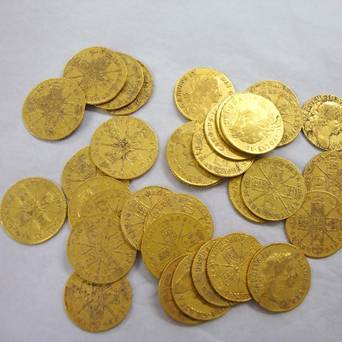Posts Tagged ‘British Coins’
The 10 UK Coins that all collectors should own
For many people it’s difficult to know which coins they should own.
When I asked our UK Coin Specialist he selected the 10 coins below based on a combination of their numismatic interest, design excellence and accessible value. 10 coins that together are some of the most iconic British coins from the last 200 years.
They aren’t necessarily the best coins, but when brought together these coins create a comprehensive collection that is also affordable at under £500.
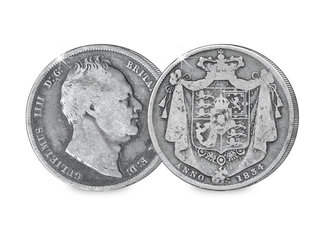 1. William IV Silver Half Crown:
1. William IV Silver Half Crown:
Year of Issue: 1831 – 1837
This coin shares the design with one of the rarest Silver Crowns. During William IV’s reign Crowns were not issued for general circulation. But proofs and patterns were, and these are highly sought after. The obverse features the Bare Head portrait of William IV and the reverse design depicts a crowned shield on a mantle.
2. Queen Victoria Gothic Silver Florin: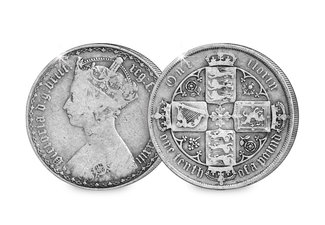
Year of Issue: 1851 – 1887
The Florin was first introduced in Queen Victoria’s reign as an early trial of decimal currency, 100 years ahead of its time. Although we are used to seeing a crowned monarch on our coinage, the portrait of Victoria wearing a crown was unusual to the general public and it was the first coin to feature a crowned monarch for over 200 years.
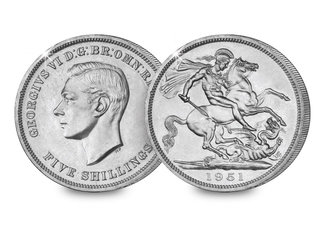 3. King George VI Crown:
3. King George VI Crown:
Year of Issue: 1951
Only two crowns were issued during the reign of King George VI. The Festival of Britain Crown was the first of these and also the first ever crown to be issued in cupronickel. The reverse of the crown features St. George slaying the Dragon, designed by Benedetto Pistrucci.
4. Queen Elizabeth II Silver Britannia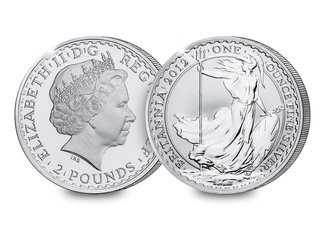
Year of Issue: 2012
Since its first issue in 1987 the 1oz Silver Britannia has become an annual staple for collectors. The Britannia reached its 25th anniversary in 2012 and to mark the occasion the original design by Philip Nathan featured on the reverse. It was also the last ever British coin to be struck from Britannia Silver (958/1000), a standard first introduced in 1696 Coinage Act.
 5. Hong Kong British Trade Dollar
5. Hong Kong British Trade Dollar
Year of Issue: 1895 – 1935
This coin was introduced in 1895 following China’s defeat in the Opium War. To ensure the acceptance of the dollar beyond British territories the design was given an Eastern look with the reverse featuring a Chinese labyrinth with the Chinese character ‘shou’ for longevity. It was demonetised in 1904, but continued to be minted until 1935.
6. Queen Victoria Britannia Penny: 
Year of Issue: 1839 – 1860
Despite being the longest reigning British Monarch, only three portraits were issued during Victoria’s reign. The first design – the Young Head – was the last penny to be struck from copper. In 1860 the switch was made from copper to bronze coinage. The reverse features a right facing seated Britannia holding a trident.
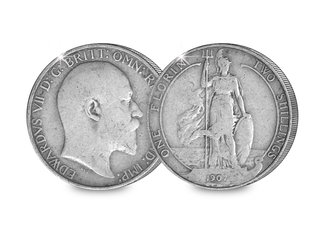 7. King Edward VII Silver Florin
7. King Edward VII Silver Florin
Year of Issue: 1902 – 1910
Designed by George William de Saulles, the Standing Britannia is considered by many to be one of the most attractive designs on British coins. It was unusual for a coin design to change so dramatically, especially because the coinage had been static for nearly 60 years during Victoria’s reign.
8. King George VI Silver Sixpence: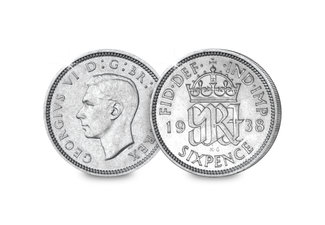
Year of Issue: 1937 – 1946
This was the last sixpence to be issued in silver. It has long been considered lucky. When the supply of threepence coins diminished, silver sixpences were used as a replacement in Christmas puddings. The RAF also use silver sixpences as good luck charm and have them sewn behind their wings or brevets, a custom that dates back to World War II.
 9. Queen Elizabeth II Coronation Crown:
9. Queen Elizabeth II Coronation Crown:
Year of Issue: 1953
This was the first commemorative coin issued during Queen Elizabeth II’s reign. It was never entered into general circulation, and as a result is highly sought after by collectors. Designed by Gilbert Ledward, the Crown features the Queen riding on horseback, which is unusual for a UK issue.
10. Queen Elizabeth II Britannia 50p: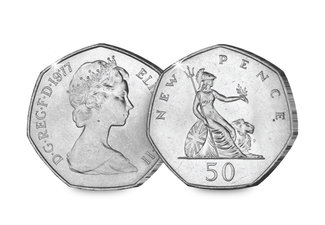
Year of Issue: 1969 – 1981
The world’s first 7-sided coin was introduced in 1969 to replace the 10 shilling note. The slight curved edges were designed to allow the coin to be used in vending machines without any problems. The obverse depicts Arnold Machin’s portrait of Queen Elizabeth II wearing the ‘Girls of Great Britain’ tiara.
These 10 coins are now available to own as a complete set.
17th century Gold coins found under Irish pub floor
It was definitely a case of the luck of the Irish after builders recently discovered one of the country’s biggest ever hoards of gold coins buried beneath the floorboards of a County Tipperary pub.
Eighty-one gold coins, mainly from the 17th century, were found concealed by soil by one of the workmen carrying out groundworks at Cooney’s pub in Carrick-on-Suir, one of the oldest pubs in the county until it was destroyed by fire.
All that glitters
Most coins were, surprisingly, in excellent condition considering they date back to the reign of Charles II, James II and William and Mary. It’s thought the hoard is largely made up of guineas and half guineas, British gold coins struck by The Royal Mint between 1663 and 1814 using gold from West Africa – which is where the name ‘guinea’ came from.
Biggest find in over fifty years
Research is currently underway to identify where the gold coins might have come from. Some experts believe they may have once belonged to a wealthy merchant as the town was a thriving trading centre in the 17th century. Others have different theories.
One thing they do agree on is that the discovery is the most exciting archeological find in Ireland’s history since 1947 when a collection of over 100 gold coins plus a number of silver coins was discovered in CountyLaois.
At the time of writing, it’s not known whether the workmen received any sort of reward but it’s got to be a worth a free pint at the very least!
Interested in historic coins?
The gold coins are currently on display at the National Museum of Ireland. A selection of historic coins from The Westminster Collection can be found here.
Will our Penny be next?
Last week Canada became the latest country to bid farewell to its penny or 1 cent coin. Australia, Brazil and Sweden have already ditched theirs – the question is will the UK be next?
With over 11 billion in circulation according to latest Royal Mint figures, the humble penny accounts for nearly 40% of all Britain’s circulating coins. It is in fact our most common coin but when it costs more than a penny to make a penny, surely its days must be numbered?
Opinion is divided
Those in favour of getting rid of it say you can’t buy anything for a penny these days. True – the penny chews of my youth have now gone from our sweet shops. You can’t even ‘spend a penny’ anymore (that’ll cost you as much as 30p for the privilege). Put simply, 1p coins have no other function but to weigh down our purses and pockets.
But, in these tough times, every penny counts. Those against the move say there are plenty of people that still need the 1p and other small denomination coins. How many of us pop our loose change in charity collecting boxes when we’re out and about? They may be small amounts but they all add up.
A future collector’s item?
So it is probably fair to say that keeping hold of your old pennies is unlikely to make you rich. However, when they do finally disappear from our change (as is almost certain at some point), they are certain to remain an important part of Britain’s numismatic heritage for centuries to come.
Penny for them
Ultimately the “Master of the Mint” Chancellor George Osborne will make the final decision but what are your thoughts – should the penny stay or go?


